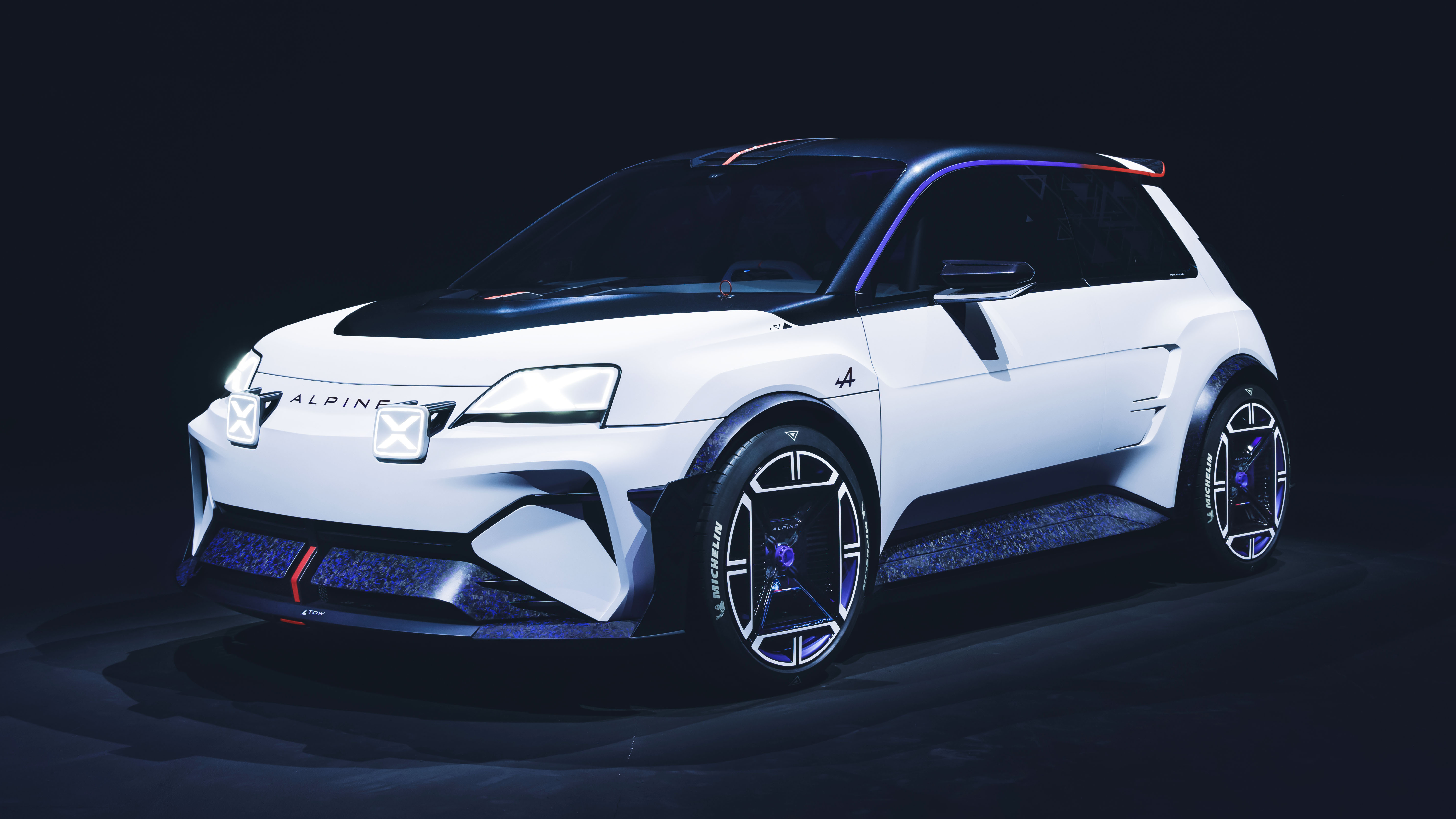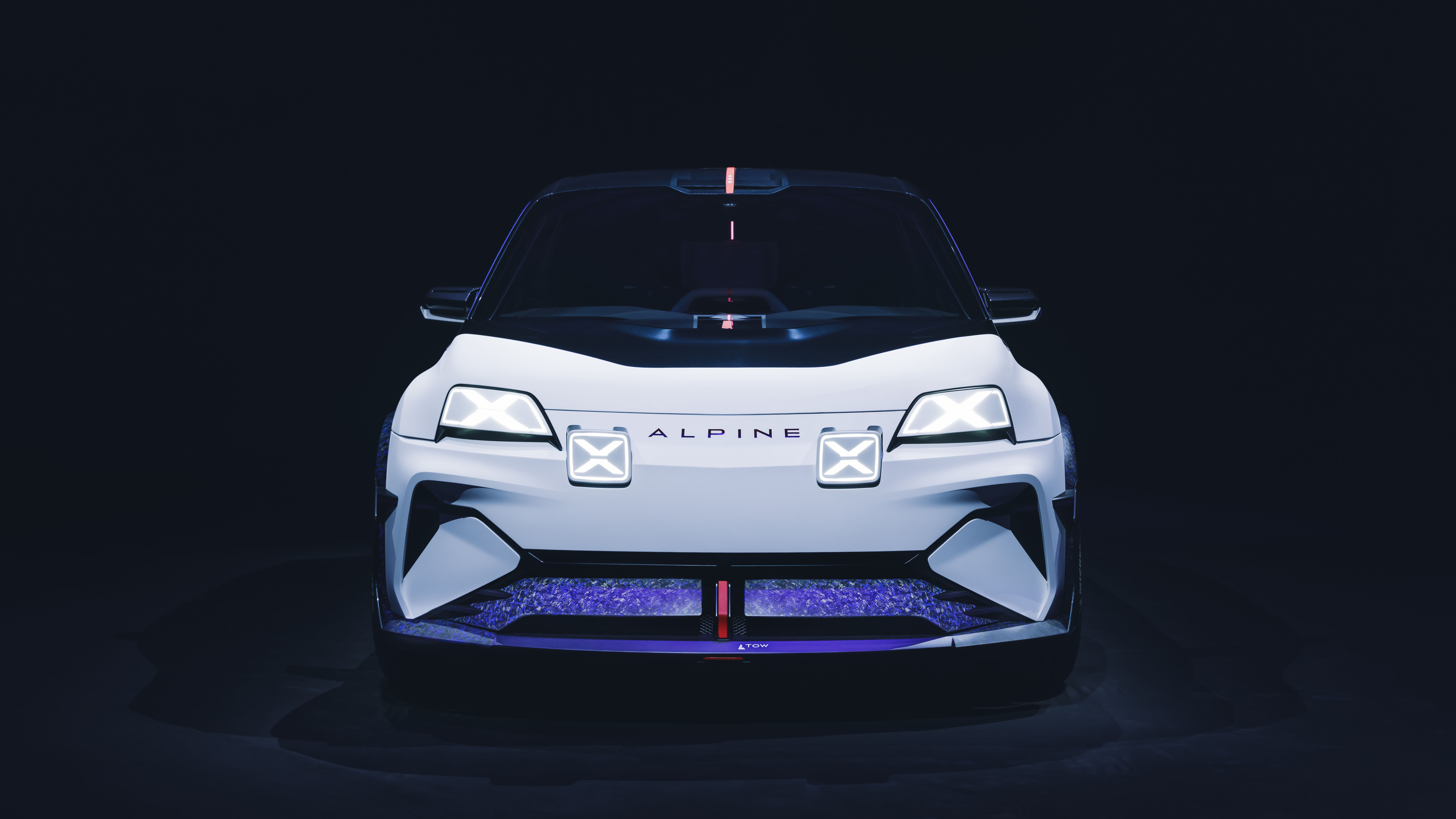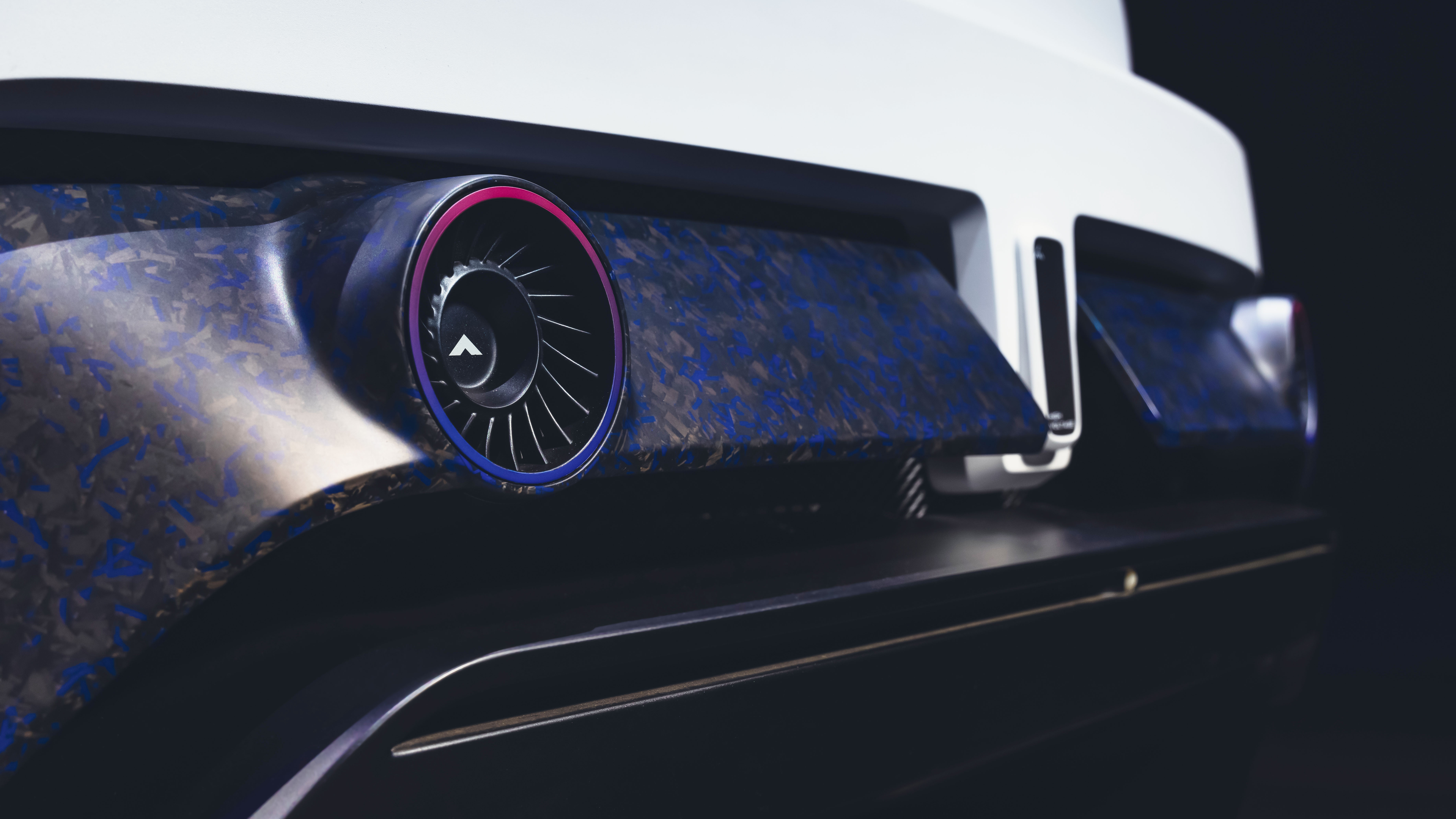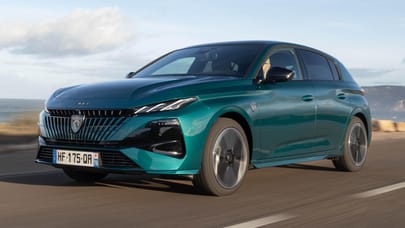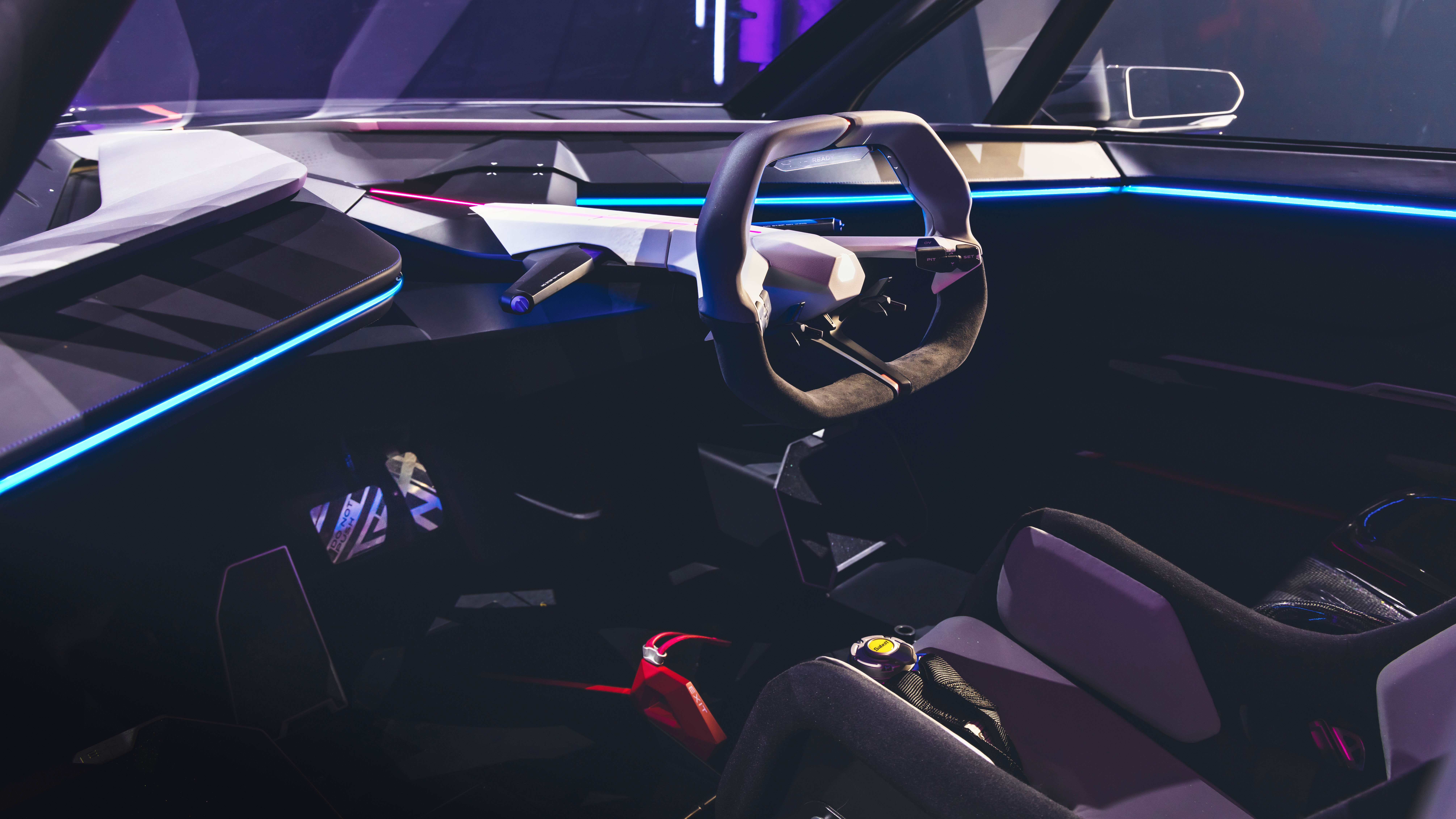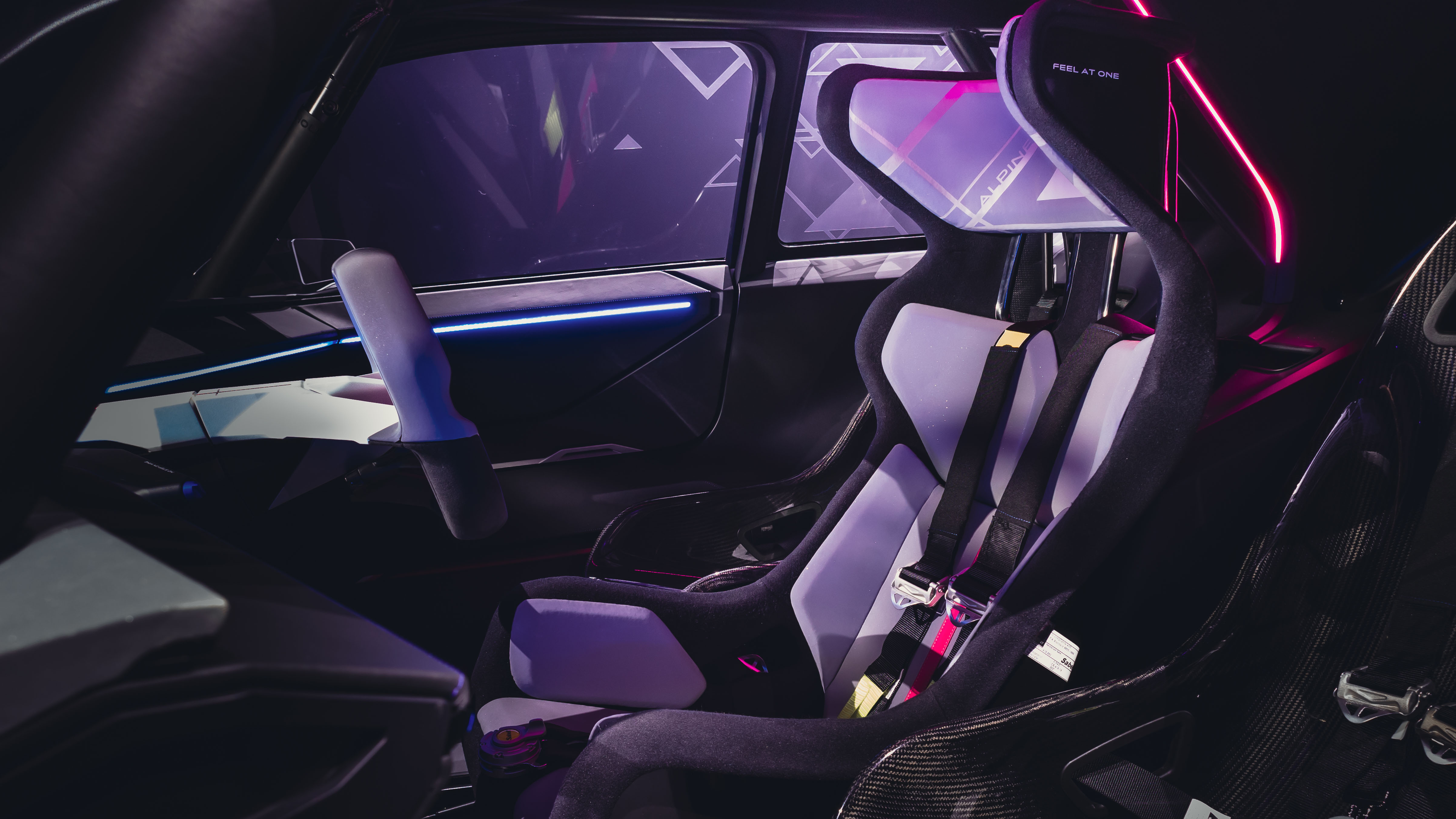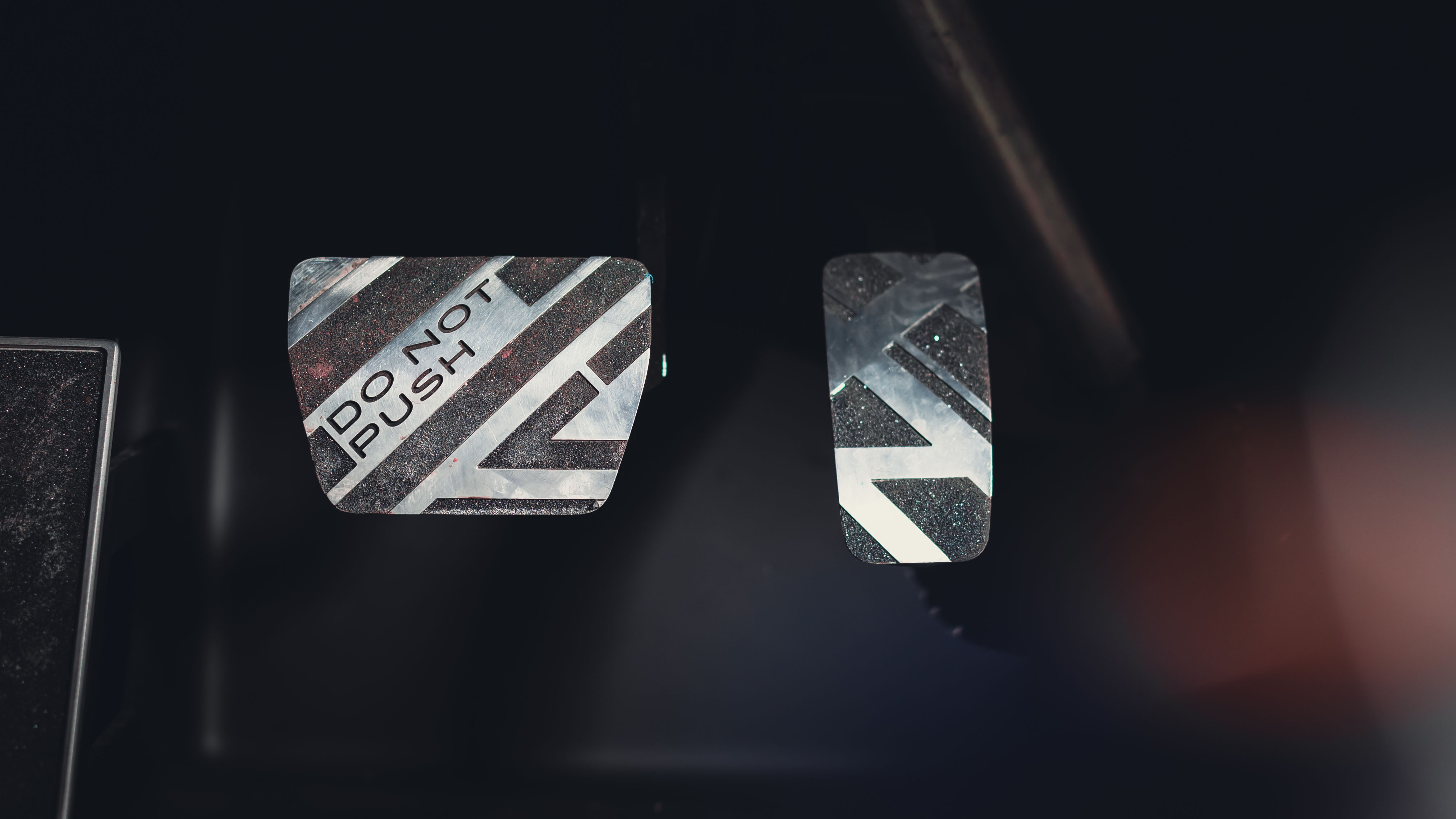
This is the Alpine 290_β, and it wants to reboot the hot hatch for the electric era
Alpine calls it a concept, but most of this will appear as an e-hatch coming your way. Good
Concept cars usually go one of two ways. They’re either pie-in-the-sky flights of fancy into a fantasy world that’ll never happen. Or they’re a bona fide preview of a future design direction reverse-engineered into something that’s almost entirely feasible. With a few little caveats.
The Alpine 290_β falls firmly into the latter category. This is a relief because it has a big job on its hands. Alpine, of course, is Renault’s performance arm, maker of the exemplary A110, not to mention a pretty effective Formula One team. But if you’ve been wondering what’s next on the road car front, here’s the answer. And here’s the mission statement: the 290_β trails the car that will reboot the hot hatch for the electric era.
Chief Designer Raphael Linari smiles the smile of someone who knows that something truly tasty sits before us, then says that 85 per cent of the exterior design is identical to the real thing. Good news, because this is one of the most instantly appealing show cars TopGear.com has seen in years.
Then he says something we didn’t expect to hear. "Alpine’s test driver Laurent Hurgon has spent the past few weeks setting this car up. We knew from the beginning that we wanted a running prototype, a car we could drive before an F1 race perhaps. That’s why it has a roll cage and look at that handbrake… I promise you, it all works!"
TG has previous with Laurent Hurgon. He took us around the track at Renault’s gigantic Aubevoye test facility in an A110 prototype six months before launch back in 2018, and made that thing dance at speeds you wouldn’t think possible. He’s a wizard.
Clearly, the 290_β is related to the electric Renault 5 that’ll be along some time in 2024. That’s the car that basically melted the internet when Renault’s CEO Luca de Meo announced it at the tail end of his giant turnaround plan press conference as the world limped out of lockdown. De Meo ushered the Fiat 500 into life in a former job and experienced the same Proustian rush when Renault’s design vice president Laurens van den Acker showed him the R5 proposal. Just do it, he said. When something’s right it’s right.
The same goes for the Alpine version. Often described as the French equivalent of Lotus, much of Alpine’s history is lost in the mists of time, but as well as the original A110 we’d urge you to check out the Seventies A310 and Eighties A610. Both still look fabulous. Meanwhile, motorsport nerds will need no introduction to 1968’s beautiful A220 and 1978’s Le Mans 24 Hour- winning A442. A R5 Alpine also pre-dates the Eighties hot hatch R5 GT Turbo (though it was badged as Gordini in the UK due to a naming rights issue). Depending on the severity of your Francophilia, this is all sub-zero cool stuff.
And it’s all here in the 290_β. It’s a short, stocky looking thing, wide of track and rammed with enough historic touch-points to keep Alpine adherents happy without tipping into retro. Even if you’ve never heard of Alpine all you need are the eyes in your head to recognise a superior piece of work. It maxes out on the R5 concept’s swollen arches, adds the obligatory chunky front spoiler and rear diffuser, and has a sizeable rear wing. Definite shades of the Eighties R5 Turbo 2, too, and that’s obviously no bad thing.
But there’s significant brand differentiation, too. The nose is smoother and echoes the frontal treatment on the current A110, a car that’s a textbook example of how to homage the past without resorting to cliché. The quad light set-up is an Alpine signature, although the 290_β’s square lamps and X-marks-the-spot/double cross rally car lighting graphic are elements that won’t make the jump to reality. Nor, sadly, will the mountings for the auxiliary lights (known internally at Alpine as ‘Monte Carlo’ lamps). They’re aluminium spars that look and feel fabulous but would send the ped pro legislators into a frenzy. The wheelarch surrounds, front spoiler and those dramatic sills are made of forged carbon fibre, enlivened with blue infusions throughout.
In fact, the whole body is carbon fibre, and it’s finished in a frozen snow-white matte paint that glitters under direct light. The colour and effect takes its inspiration from the mountains that inspired Alpine founder Jean Rédélé, Linari explains, while the darker element that carves its way across the bonnet and up and over the roof reflects the jagged topography of the Alps. The carbon extrusions even have a mineral quality to them. The Alpine name badge uses dichroic lettering, so it changes colour according to the light. It’s an EV but that hasn’t stopped them from including a pair of exhaust exits. These are more like the vents you find on a games console to ventilate the hardware. The wheels are 20in jobs with floating squares cut into them.
Top Gear
Newsletter
Thank you for subscribing to our newsletter. Look out for your regular round-up of news, reviews and offers in your inbox.
Get all the latest news, reviews and exclusives, direct to your inbox.
"We want people to recognise an Alpine from 290m away, then 290cm, and finally 290mm, and the closer you get there will be a powerful element of surprise,” Linari continues. On the show car, that runs to a variety of Easter eggs. The indicator repeaters cut across the lower part of the front bumper; look closely and you’ll see the name Esteban Ocon on one side, Pierre Gasly on the other. At the rear, there’s a little graphic imprint of Greta Thunberg hidden beneath an access flap. Hopefully she’ll approve of this car. The GPS co-ordinates of the Alpine design studio are etched beside the rear lights. And peer through the left rear side window and you’ll spot a nodding dog. His head’ll go into frenzy if Hurgon’s on a hot lap.
There are air intakes secreted all over the body, too, some functional but mostly as references to Alpine’s potent motorsport connections. Some of them are integrated with the head- and tail-lights for a double functionality. The slats ahead of the rear arches are arguably somewhat superfluous, and the visible shutline confirms that the real thing will be a five-door with room in the rear for the conventional number of passengers.
If that sounds weird that’s because the 290_β’s major party trick is one it’s nicked from the McLaren F1. Yep, the driver sits in the middle with two seats set slightly back flanking him or her. Indeed, as eye-popping as the exterior is, it’s inside where Linari and his team have really stretched out.
“It’s too early to announce what’s happening inside the car so we went crazy on the interior,” Linari says. “Driving sensation is at the centre of our product philosophy so we thought, ‘what if we put the driver in the middle of the car?’ This in turn led to many styling solutions and ideas. Because this has never been done on such a compact format.”
Rather than a conventional dashboard, the 290_β has an exposed inner structure that spans the full width of the cabin, suggestive of the nose and front wing of an F1 car. You can mount a GoPro on the spars of the wing. Linari says that he wanted to expose the area around the bulkhead so that the driver’s feet and legs would be visible but structural issues prevented them from doing so. The steering wheel is also F1-inspired, with the displays and information read-outs concentrated onto it, bar a series of controls set into a panel above, plane cockpit-style. It detaches via a quick release mechanism just like its racing sibling. (There’s an alternative, more ‘lifestyle’ wheel but we didn’t see that one during our preview). The central driver’s seat is trimmed in a sustainable, quasi hi-vis material, while the two on either side are ultra-lightweight carbon fibre race items.
Much effort has been expended on interior illumination. Magenta light is used on the vertical axis, and runs like a spine through the centre of the car culminating in a fin effect on the rear. That creates a truly dazzling optical effect from the outside, as well as placing the driver firmly at the centre of the action. Blue light is used for the horizontal axis, running the length of the interior IP, embracing the passengers, and connecting with an aperture under the exterior mirrors. It’s pure showbiz, and none of it stands an (Alpine) snowball’s chance in hell of making it. But it’s very imaginative and beautifully executed.
It also has the fat sills of a race car, which brings us back to the 290_β’s competition alter ego. Linari says the rear spoiler and other aero addenda are functional because they’ve done CFD (computational fluid dynamic) analysis on it. Again, this is unusually thorough for a concept car.
It all bodes well for the real thing. That’ll be underpinned by Renault’s CMF-EV (‘common module family’) architecture, as applied across the group and co-developed with Nissan. It’ll be powered by the 215bhp e-motor used in the Mégane E-Tech, fed by a 60kWh battery. The details are all still under wraps for now but Renault’s engineering boss Gilles Le Borgne is on the record as saying it’ll have torque vectoring and the sort of handling you’d expect from an Alpine.
Frankly, they had us at hello.
Trending this week
- Car Review
BMW iX3




